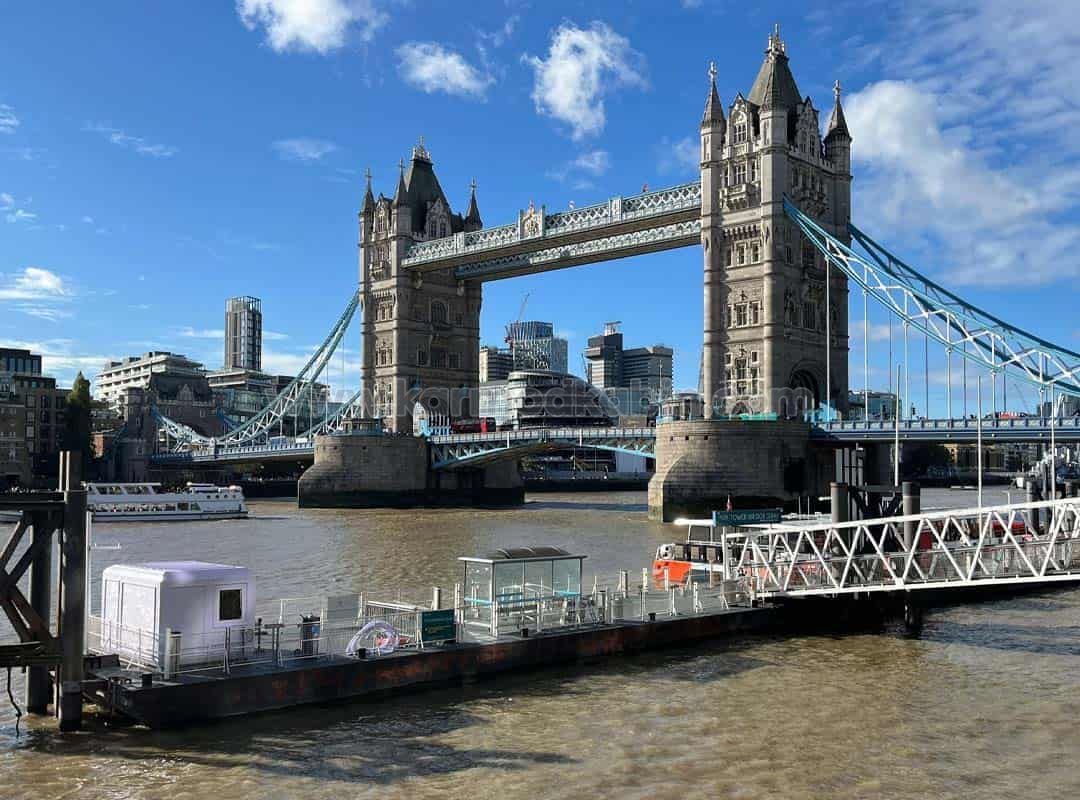
The global construction and housing industry is undergoing a major transformation - and portable cabins are at the heart of this change. Once considered temporary solutions for worksites or events, portable cabins have evolved into high-quality, customizable, and export-ready structures that serve a wide range of purposes worldwide. From housing and offices to schools and medical facilities, these modular units are now being shipped across continents to meet growing demand for quick, efficient, and affordable building alternatives.
In 2025 and beyond, portable cabins are expected to play a crucial role in international trade. Their flexibility, sustainability, and cost-effectiveness make them an attractive choice for countries facing rapid urbanization or reconstruction needs. As global economies shift toward modular infrastructure, portable cabin exports are emerging as a strategic industry - bridging the gap between mobility, innovation, and modern living. For manufacturers, this surge represents not only a profitable business opportunity but also a chance to redefine how the world builds and lives.
In recent years, the world has witnessed a remarkable shift from traditional construction to modular and portable building systems. As cities expand and populations grow, the demand for fast, flexible, and cost-efficient structures has skyrocketed. Portable cabins - once associated primarily with temporary housing - are now recognized as viable long-term solutions for commercial, residential, and institutional purposes. They can be transported, installed, and expanded easily, addressing the urgent need for adaptable infrastructure in both developed and emerging markets.
This growing global demand is driven by economic and social factors. Nations facing housing shortages, labor constraints, and environmental challenges are turning to modular technologies to accelerate development. Portable cabins provide a perfect balance between mobility and permanence, enabling rapid deployment in disaster zones, remote work sites, or urban expansion projects. As a result, countries are increasingly investing in prefabricated and modular imports to support their infrastructure goals - and exporters are stepping up to meet this booming international appetite.
The rise in portable cabin exports reflects a global shift toward practicality, speed, and sustainability in construction. Unlike traditional building methods that require months of on-site labor, portable cabins are manufactured in controlled environments and shipped ready for assembly. This streamlined production process reduces construction timelines by up to 70%, making them ideal for countries that need immediate solutions for housing, offices, or public facilities. Exporting nations benefit from efficient logistics and repeatable design systems, allowing them to meet diverse international standards with ease.
Another factor driving export growth is the universal adaptability of portable cabins. They can be tailored to different climates, cultures, and regulations, from arid regions in Africa to coastal environments in Southeast Asia. With innovations such as thermal insulation, solar panels, and modular expansion systems, portable cabins offer a sustainable alternative to traditional buildings. As global trade increasingly favors products that balance performance with environmental responsibility, these versatile structures have become a symbol of modern, efficient, and eco-conscious construction exports.
The global portable cabin market is experiencing unprecedented expansion, with exports spreading across every continent. Asia-Pacific currently leads the industry, driven by manufacturing powerhouses like China, India, and Turkey, which supply cost-efficient and customizable cabins to markets in Europe, Africa, and the Middle East. These regions have mastered modular production and logistics, enabling rapid fulfillment of international orders. Europe, on the other hand, is witnessing a surge in demand for eco-friendly and energy-efficient portable units, particularly in countries focused on sustainable construction practices such as Germany, the Netherlands, and the Scandinavian nations.
In 2025, exports to Africa and Latin America are expected to grow significantly due to large-scale infrastructure projects and post-disaster reconstruction programs. Governments and NGOs are increasingly relying on portable cabins for schools, hospitals, and temporary shelters. The Middle East remains another high-potential market, where rapid urbanization and industrial expansion require fast-deployable modular solutions. Meanwhile, North America is adopting portable structures for remote work sites, mining, and defense applications. This global demand confirms that portable cabin exports are not just a passing trend but a cornerstone of modern international construction trade.
For international buyers, portable cabins offer exceptional economic and logistical benefits that make them a smart investment:
This combination of speed, affordability, and convenience makes portable cabins the preferred choice for global developers and public institutions alike.

Customization is one of the main reasons portable cabins thrive in international markets. Manufacturers now offer bespoke designs that adapt to any region or climate:
This level of adaptability transforms portable cabins into versatile solutions capable of meeting cultural, regulatory, and environmental expectations worldwide.
Portable cabins have become indispensable across multiple global sectors:
These applications prove that portable cabins are no longer limited to temporary use - they are vital, scalable assets supporting both economic growth and humanitarian development.
Sustainability has become central to portable cabin design and production. Leading exporters are now emphasizing:
This combination of environmental responsibility and long-term durability positions portable cabins as a cornerstone of sustainable global development.
To compete globally, manufacturers comply with rigorous certification systems, including:

Meeting these standards assures buyers that every cabin shipped meets international safety, durability, and performance expectations.
Technology is reshaping the portable cabin industry with rapid advancements such as:
These innovations give exporters a decisive edge by combining design flexibility, environmental efficiency, and technological sophistication.
Global logistics present challenges that industry leaders now address strategically:
By optimizing transportation and communication systems, exporters turn logistical complexity into a smooth, reliable process.
Governments around the world are increasingly recognizing the economic potential of prefabricated and modular construction exports - including portable cabins. Many countries have introduced export incentives, tax reductions, and trade agreements to encourage manufacturers to expand globally. For example, nations with strong steel and construction industries, such as Turkey, China, and India, offer financial support and simplified export procedures for modular housing producers. These incentives help exporters remain competitive, improve production capacity, and access new markets with lower risk.
In addition to financial programs, international cooperation and trade policies are streamlining cross-border sales. Free trade zones, construction fairs, and government-backed export councils promote collaboration between manufacturers and overseas buyers. Some governments are also investing in research and development to enhance sustainability and digitalization within the prefab sector, aligning exports with modern green-building standards. As modular and portable construction continues to gain global relevance, supportive public policies ensure that exporters not only meet international demand but also strengthen their countries’ positions as leaders in innovative, sustainable housing solutions.
The rise of portable cabin exports is best illustrated through real-world success stories that showcase adaptability, innovation, and global impact. In Africa, for example, several nations have partnered with international suppliers to deploy modular schools and healthcare clinics in remote areas. These projects have transformed access to education and medical care, with thousands of units installed in record time. Similarly, Middle Eastern countries have imported high-end portable offices and worker accommodations for large-scale energy and infrastructure projects, benefiting from rapid deployment and climate-resistant designs.
In Europe, modular cabin exports are being used to address urban housing shortages. Prefabricated student accommodations and micro-apartments made from portable units have been installed in cities like Berlin, Oslo, and Amsterdam - offering affordable, eco-friendly solutions to growing populations. Meanwhile, Australia and Latin America are investing heavily in portable disaster-relief housing, which can be delivered and assembled within days following natural catastrophes. These case studies demonstrate the versatility of portable cabins as export products that deliver both economic and humanitarian value, redefining what global construction efficiency truly means.
The next generation of portable cabin exports will be driven by:
These advancements ensure that exported portable cabins remain at the forefront of technology, comfort, and sustainability.

The global export of portable cabins has evolved into a major economic driver for many manufacturing nations. Beyond direct sales revenue, this industry stimulates growth across multiple sectors - from steel production and logistics to design, engineering, and renewable technology. By exporting high-value modular products, countries enhance their industrial competitiveness, create new jobs, and attract international investment. Each export transaction supports a wide network of suppliers, transporters, and service providers, contributing to a stronger and more diversified national economy.
Moreover, portable cabin exports help nations showcase their innovation and technical expertise on the world stage. Countries like Turkey, China, and India are positioning themselves as global leaders in modular construction, exporting not only products but also knowledge, technology, and design excellence. This strengthens international partnerships and increases global trust in their industrial capabilities. As demand for sustainable and mobile infrastructure grows, the portable cabin export industry will continue to play a crucial role in boosting economic resilience - turning local manufacturing into a global force that fuels both progress and prosperity.
Join the global movement transforming the future of construction - with portable cabins designed for innovation, mobility, and sustainability. Whether your project involves housing, education, healthcare, or commercial infrastructure, modern modular solutions deliver unmatched speed, quality, and cost-efficiency. As international demand continues to rise, now is the perfect time to invest in export-ready portable cabins that meet the world’s evolving needs. Our advanced production systems, certified quality, and eco-conscious designs ensure that every cabin shipped stands for durability, performance, and global excellence.
Take your business beyond borders with cutting-edge portable cabin technology.
Here’s how you can get started today:
Expand your reach. Strengthen your brand. Deliver quality worldwide. Your gateway to global success starts with the next generation of portable cabin exports.